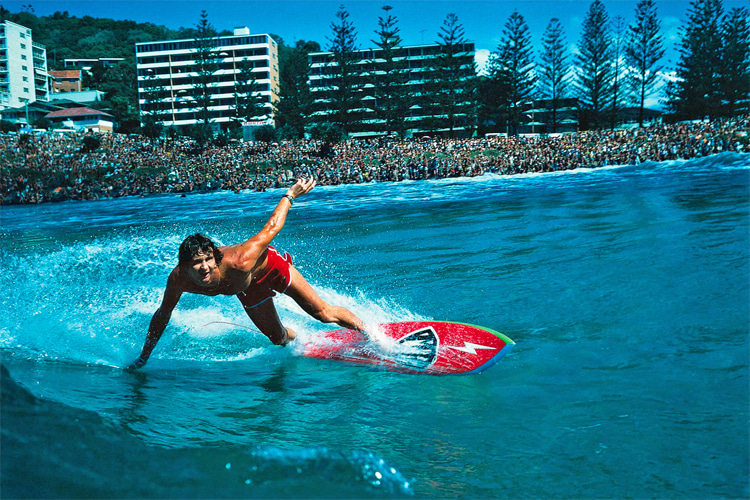He's an icon and a three-time world champion. Here's why Mark Richards is such a magnetic, talented character in surfing history.
Richards has a unique surfing style. He owns it - it's a trademark.
Nobody has ever performed a bottom turn on a high-performance wave like the Australian legend.
The flexible, smooth, and creative wave rider could suddenly turn into an explosive power surfer.
The legacy of Mark Richards is incommensurable. Actually, he was once named "the complete surfer."
MR has its own chapter written in the book of surf culture and Australian surfing history.
He is also the first surfer to clinch four back-to-back world titles and one of the standout names of the "Free Ride Generation."
With a down-to-earth, polite, and laid-back personality, Mark Richards also impressed with his tall stature, wing-like arms, long torso, and neck.
MR's unorthodox riding style caused a sensation - not everyone loved it, but no one was indifferent.
"First, he was ugly. Then he was good but weird. Then he was graceful - superbly graceful," Australian surf journalist Phil Jarratt onde wrote.
Here's everything you should know about the surfer who loved bright-colored wetsuits and surfboards:
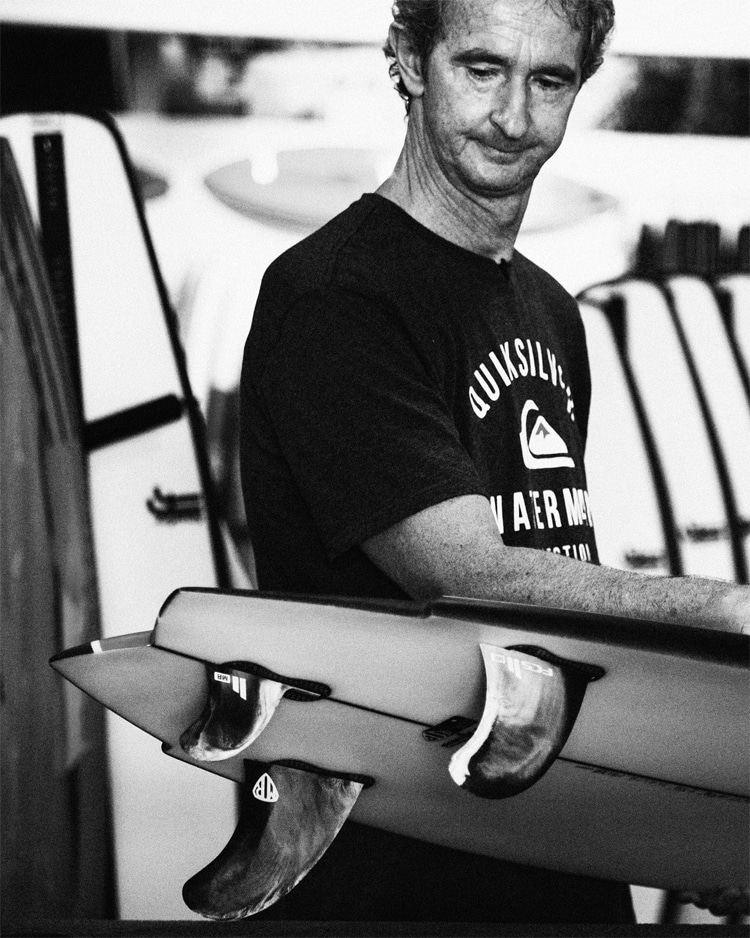
1. Mark "MR" Richards was born on March 7, 1957, in Newcastle, New South Wales, Australia;
2. His father - Ray Richards - was a second-hand salesman and surfer. In 1961, he opened Newcastle's first surf shop. His mother, Val, was also a beach lover.
3. The young MR started riding waves on a surf-o-plane surf mat and graduated to a surfboard at age six at Mereweather Beach;
4. His first idol was Nat Young, but he was also a cricket fan;
5. The Australian first visited Hawaii in 1972;
6. In 1973, he won the Australian junior surfing title;
7. In 1974, he accepted a late entry into the Smirnoff Pro-Am at Waimea Bay and was the first to paddle out in scary 30-foot closeout waves;
8. One year later, the 18-year-old regular-footer traveled to Hawaii and won the Smirnoff Pro-Am at Waimea Bay and the World Cup of Surfing at Sunset Beach on Lightning Bolt single-fin surfboards shaped by Tom Parrish. The prize money earned him $9,000, the equivalent of about $45,000 today;
9. Filmmaker Bill Delaney spotted Richards while shooting his 1975 classic movie, "Free Ride." The film ended up featuring Wayne "Rabbit" Bartholomew and Marks' epic tube duel at Pipeline;
10. At age 15, Richards was riding Geoff McCoy surfboards in the morning at North Narrabeen during the school holidays. In the afternoon, the surfer would watch the shaper build boards;
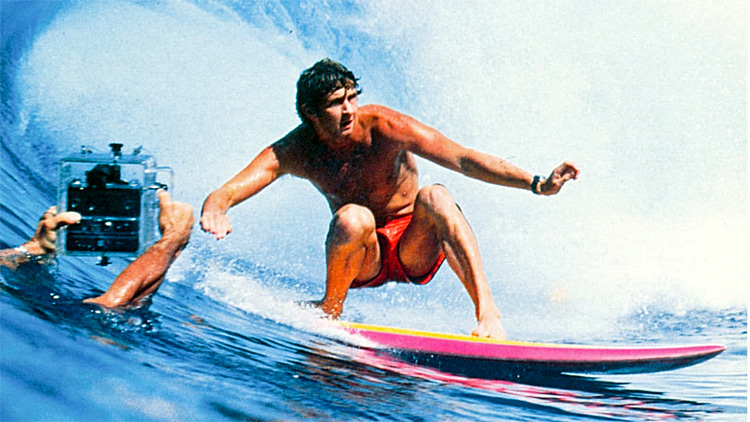
11. Mark Richards won four consecutive surfing world titles from 1979 to 1982, the last four seasons of the IPS World Circuit era;
12. The Australian surf legend designed and shaped the boards he rode in his championship title seasons. Ninety percent of the time, Richards used twin-fin boards, and in Hawaii, he rode single fins;
13. MR said he was inspired by the boards of Reno Abellira and the shaping skills of Dick Brewer;
14. One day, he revealed: "I don't think I can remember life pre-twin fin because it's been such a big part of my competitive and shaping career";
15. The friendly and tall wave rider believes the first time he saw a twin-fin surfboard was either with Corky Carroll or Rolf Aurness in an article published in Surfer Magazine. "One of them was doing a 360";
16. The first time Mark Richards rode a twin fin, he felt a sense of "freedom and fun when you rode it";
17. One of the most important moments in his career occurred during the 1976 Coca-Cola Surfabout in Sydney when Reno Abellira shared the dimensions of his ultra-fast round nose, kneeboard-style fish board with the young Australian;
18. The first MR self-built surfboard was the 21-inch wide, 5'10'' Bumble Bee Twin-Fin;
19. In 1977, Richards stayed in Hawaii after the contest season and managed to get a couple of months shaping with Dick Brewer, "learning how to get from A to B";
20. MR had the perfect board for small waves and the right board for big surf, but he didn't have the in-between equipment for the competitive three-to-six-foot waves. So, the famous 6'4'' Free Ride twin-fin surfboard arrived in 1978;
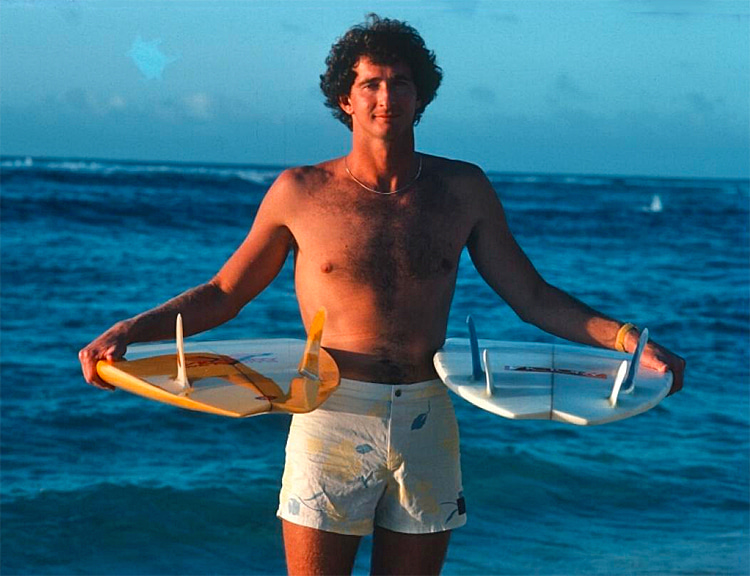
21. The Free Ride elevated Mark's surfing to a new level of radical changes in direction, power turns, and speed. "I got it right, first go. It was fast and incredibly maneuverable," the champion stated. He used it in his first win at Bells Beach;
22. Mark Richards's boards feature the Superman-inspired shield logo with the shaper's initials - "MR." The iconic symbol was designed by Hawaiian artist Albert Dove;
23. Several decades later, MR shaped replicas of his classic twin-fin design;
24. The Australian surfer-craftsman once revealed that Simon Anderson's thruster revolution nearly ended his career as a surfboard manufacturer because he was deeply "associated, identified, and locked in with the twin-fins";
25. Marks' main opponent was his fellow countryman Cheyne Horan, who finished runner-up in 1979, 1981, and 1982;
26. The tall and thin babyface surfer retired from full-time competitive surfing at the end of the 1982 season;
27. Mark Richards won the Rip Curl Pro at Bells Beach four times (1978–80, 1982), the Stubbies Pro twice (1979 and 1981), and the Gunston 500 twice (1980 and 1982);
28. He is a four-time Duke Kahanamoku Invitational Surfing Championship finalist and won the event in 1979;
29. The Australian gentleman also reached the final of the Pipeline Masters four times and won it in 1980;
30. Richards won the Billabong Pro at Waimea Bay in 1985 and 1985;
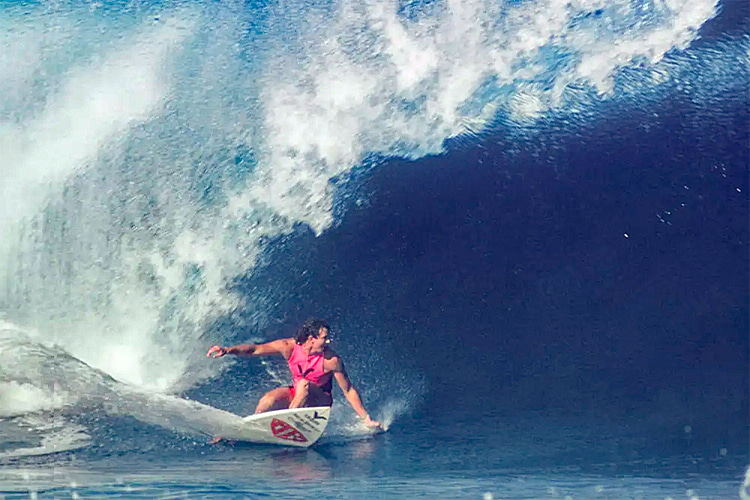
31. In the 1980s, the twin-fin guru starred in a Tooheys Beer commercial;
32. MR won the grandmasters divisions of the 2001 Quiksilver Masters World Surfing Championship;
33. In 2005, Richards revamped and refined his most popular twin-fin design and launched the "Super Twin." His collaboration with ...Lost's Matt Biolos brought his title-winning 1980 board into the US market;
34. In the 50th Anniversary of Surfing Australia, MR was named Australia's "Most Influential Surfer" between 1963 and 2013;
35. One of Richards' most popular nicknames is "The Wounded Seagull" because of the bird wings riding style he adopted, waving his arms and hands loosely up in the air;
36. In 1994, Mark Richards was awarded the Medal of the Order of Australia (OAM) for his service to surfing;
37. The blue-eyed regular footer is addicted to Coke and Caramello bars;
38. The four-time Australian surfing world champion was inducted into the Sport Australia Hall of Fame in 1985 and into the Huntington Beach Surfing Walk of Fame in 1994;
39. Mark Richards is 6'1'' (1.85 meters) and weighs around 175 pounds (80 kilograms);
40. Mark "MR" Richards developed back, knee, and ankle problems at a young age that kept him from enjoying long surf sessions;
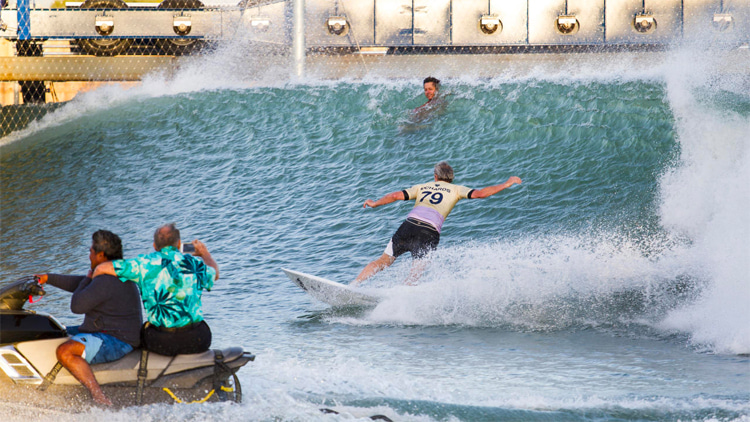
41. The Australian surfing hero loves the beach, but he "can't stand the sand";
42. Mark and his hometown schoolteacher girlfriend and wife Jenny have three children: Kyle, Nathan, and Grace. In 1989, the couple's eight-week-old son Beau died of Sudden Infant Death Syndrome (SIDS);
43. The greatest Australian surfer of all time starred in several 1970s and 1980s movies, including "A Matter of Style" (1975), "Playgrounds in Paradise" (1976), "In Search of Tubular Swells" (1977), "Fantasea" (1978), "Wizards of the Water" (1982), "Ocean Fever" (1983), and also "Bustin' Down The Door" (2008). His video biography "The Mark Richards Tapes" was released in 1987;
44. In 1992, David Knox wrote the book "Mark Richards: A Surfing Legend";
45. In 2006, Pearl Jam's lead singer invited his friend Mark Richards to pick the setlist for the band's concert in Newcastle;
